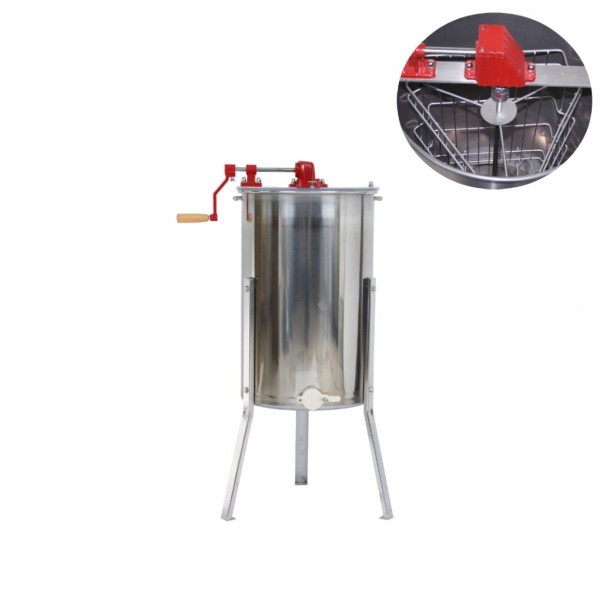A honey extractor is a piece of equipment used by beekeepers to remove honey from honeycombs. The extractor spins the honeycomb inside a chamber, and the centrifugal force pulls the honey out of the comb and into a container.
There are a few different ways to harvest honey from bees, but the most common is using a centrifuge. A large plastic or stainless steel drum or container holds a frame basket, which spins and forces the honey out onto the inside of the drum. The honey is then collected and bottled. This method is relatively gentle on the bees and doesn't require too much processing before the honey is ready to eat.
by a beekeeperThe beekeeper uses a sharp knife to remove the wax capping from the honeycomb. The comb is then placed in a centrifuge where the honey is spun out and collected. The wax comb is not damaged in this process and can be reused by the bees.
A beekeeper uses an uncapping fork or knife to remove the wax capping from the frame. Uncapping is often done inside an extractor so the wax cappings can fall through the holes in the bottom of the basket and be collected below The process of uncapping honey frames is an important step in the extraction process, as it allows the honey to be accessed and removed from the frames.using an uncapping fork or knife. Uncapping is often done inside an extractor so the wax cappings can fall through the holes in the bottom of the basket and be collected below. This allows the honey to be collected without having to handle the frames, making the process more efficient and less messy.
Honey extractors come in a variety of different sizes and shapes, but they all have one common goal: to remove honey from the comb without damaging it. There are a number of different types of honey extractors on the market, each with its own set of features and benefits. When choosing a honey extractor, it’s important to consider the size of your operation and the types of honey you’ll be extracting.
Manual Honey Extractor
The downside is that they are slower and more labor-intensive.Manual honey extractors are a great option for those who are looking to save money. They are also a great option for those who want to be able to extract honey without a power source. The downside to manual extractors is that they are slower and more labor-intensive.
Manual extractors are generally better suited to the hobby beekeeper with less than 10 hives. They are less expensive, lighter weight and easier to store than their electric counterparts. Electric extractors are faster and can handle more honey in a shorter amount of time, making them better suited for commercial beekeepers.
Electric Honey Extractor
This electric motor is much more powerful than a hand crank, so it can spin the frames much faster. This makes the extraction process go much faster and is less work for the beekeeper.Electric honey extractors are much faster and easier to use than manual extractors. They use an electric motor to spin the frames, which is much more powerful than a hand crank. This makes the extraction process go much faster and is less work for the beekeeper.
Electric extractors are expensive to buy but are worth the money if you have a large number of hives. If you have a lot of hives, an electric extractor is a big time-saver. You can load up the extractor and then start working on the next batch of frames while it does its thing. They're not cheap to buy, but they're worth it if you have a lot of hives.
Radial or Tangential
Tangential baskets are a type of honey extractor that is common for small-scale hobbyists. They are designed so that the frames are held in the basket with the honeycomb facing outwards. This type of extractor only extracts honey from the outside-facing side of the frame, so you will need to flip the frame and repeat the process.
of the comb by centrifugal force. A radial honey extractor is a type of honey extractor that uses centrifugal force to remove honey from beehive frames. The frames are placed in the extractor with the top bar facing outwards, and the honey is forced from both sides of the comb.
Size of Extractor
the amount of honey you plan on extracting, the amount of space you have, and how often you plan on extracting honey. A general rule of thumb is that you should choose an extractor that is twice the size of the amount of honey you plan on extracting. For example, if you only plan on extracting 2 gallons of honey at a time, you should choose a 4-gallon extractor.When deciding on what size honey extractor to buy, you will need to take into account the amount of honey you plan on extracting.Another factor to consider is the amount of space you have. If you have limited space, you may want to choose a smaller extractor. Finally, you will need to consider how often you plan on extracting honey. If you plan on extracting honey multiple times a year, you may want to invest in a larger extractor.
As with most things in life, you get what you pay for when it comes to purchasing an extractor. Larger models are going to be more expensive than their smaller counterparts, often 3-6 times the price. However, these larger models offer a number of advantages including the ability to process more honey at one time and shorter processing times. If you are serious about beekeeping, then investing in a quality extractor is a wise decision.
Space is a important factor to consider when choosing an oil extractor. Larger machines take up more room and may not be practical for small businesses or home use. Some manufacturers offer a smaller, compact model for those with limited space.
Your choice of an electric or hand-crank model will be a big factor in how much time you spend collecting honey. The size of the honeycomb. a deep frame can take a lot longer to extract than a shallow one. How fast your honey extracting process is will largely depend on the size of your honey extractor and the type of frames you are using. If you have a large extractor, you will be able to fit more frames and extract honey faster. However, if you have a smaller extractor or if you are using deep frames, the process will take longer.
, if an extractor can handle eight frames, it can handle about 16 hives.An extractor is a machine used to remove honey from honeycombs. As a rough estimate, it can handle double the number of hives given its number of frames. For example, if an extractor can handle eight frames, it can handle about 16 hives. This estimate is based on the assumption that the honeycombs in each hive are of a similar size.
You will also want to make sure that you have all of the right equipment. A good honey extractor is a must, as well as a capping knife and a uncapping fork. With the proper equipment, harvesting honey is a breeze.
If you're looking for a quality honey extractor, whether for commercial or hobbyist purposes, HonestBee has a range of options to suit your needs. Their extractors are made from durable materials and are designed to efficiently extract honey from frames, so you can get the most out of your honey harvest. Plus, their customer service is top-notch, so you can be sure you're getting the best possible product and service.
Electric 24 Frame Honey Extractor
For the commercial beekeeper. This 24 frame electrical honey extractor (aka honey spinner) will make light work of your honey harvest. Stainless steel barrel with 304 stainless steel inner basket.
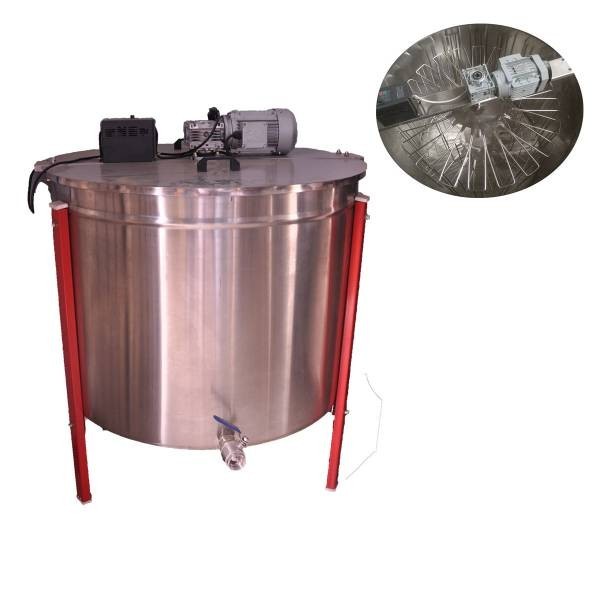
Electric 8 Frame Honey Extractor
This is highly efficient when compared to the tangential honey extracors since you do not need to keep removing and flipping bee frames. It's suited for commercial beekeepers or those who have many beehives.
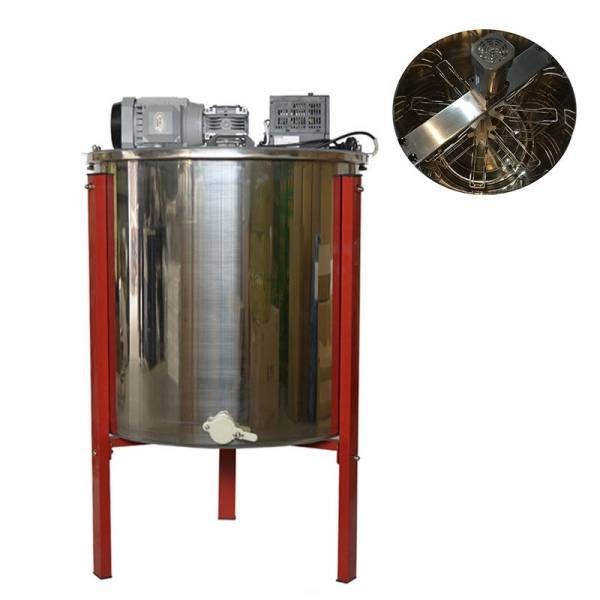
Electric 4 Frames Stainless Steel Honey Extractor
This Electric 4 Frames Honey Extractor fits shallow, medium, and deep frames and also keeps the metal gears enclosed to keep them clean of honey. Saves excessive manual handling
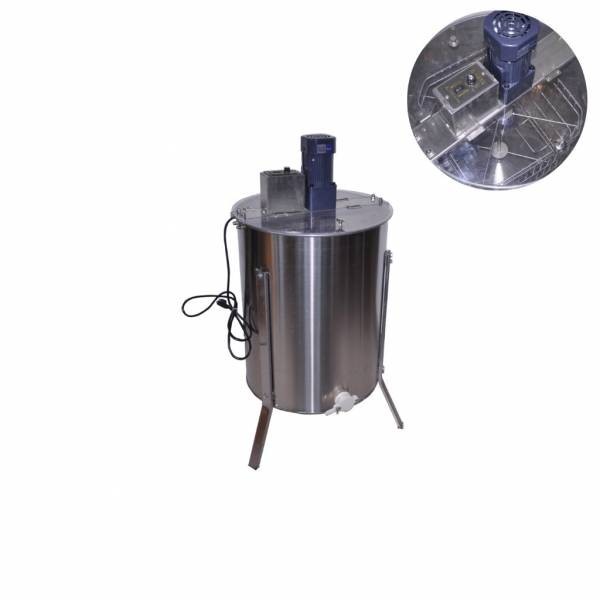
Manual Plastic Honey Extractor With 2 Frames
Manual plastic Honey Extractor with 2 Frames is an economic choice for the hobby beekeeper with only one or two hives, with detachable handle for easy storage. It is constructed of a heavy food-grade plastic with a steel shaft, plastic honey gate and a plastic lid.
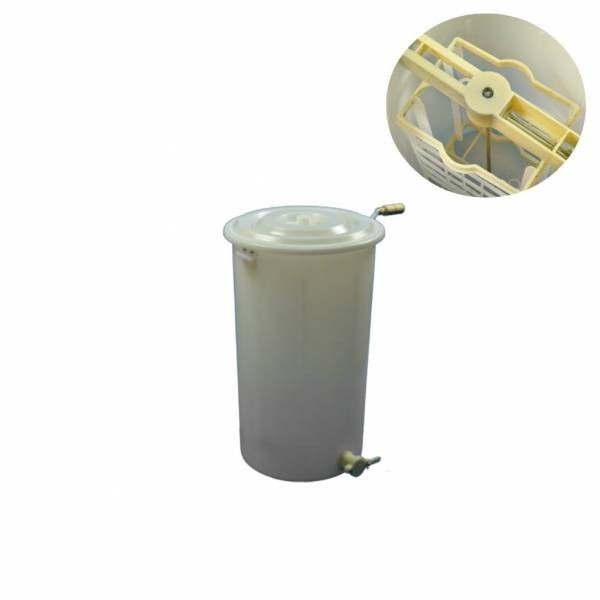
Manual 4 Frame Honey Extractor
The Manual 4 Frame Honey Extractor body is made from stainless steel and is machine rolled with seamless welding. Honey extractors are simple mechanical devices used for extracting honey from honeycombs.
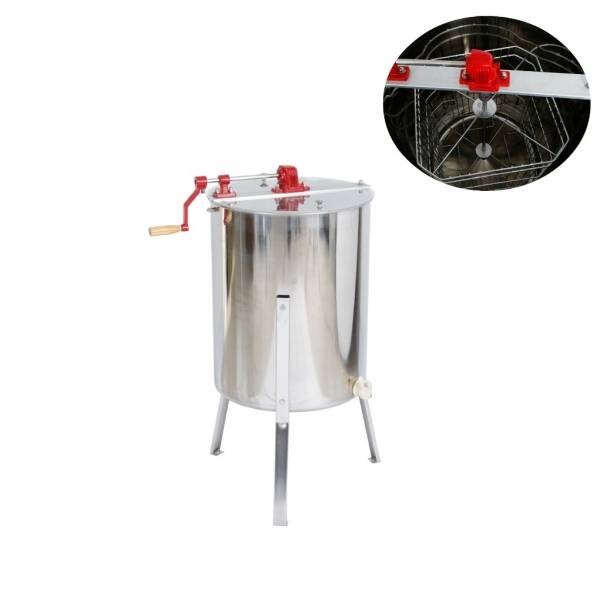
Manual Stainless Steel Honey Extractor With 2 Frames
Honey extractor is an easy and economical way for beekeepers to exact honey from honeycomb. This manual stainless steel Honey Extractor with 2 Frames handles up to 2 standard deep, medium, or shallow frames, baskets inside are able to hold as much as 2 frames at once. The enclosed gear upon the frame will not contaminate the honey.
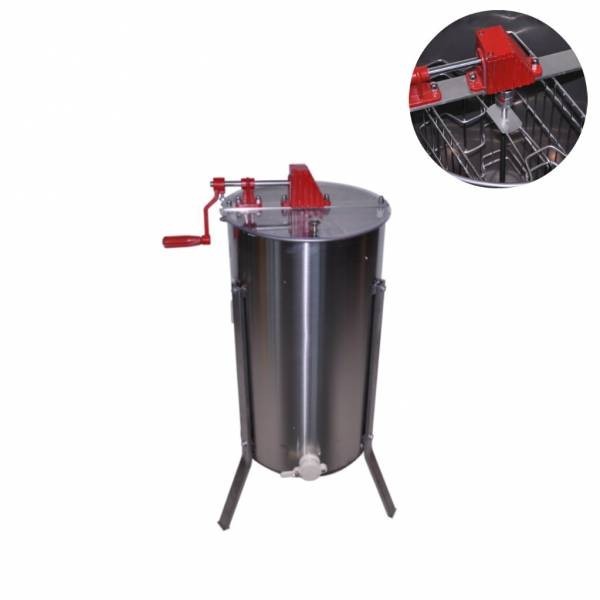
Manual 3 Frames Stainless Steel Honey Extractor
It's a 3-frame manual honey extractor with flat bottom and more durable. The honey extractor body is made from stainless steel and is machine rolled with seamless welding.
